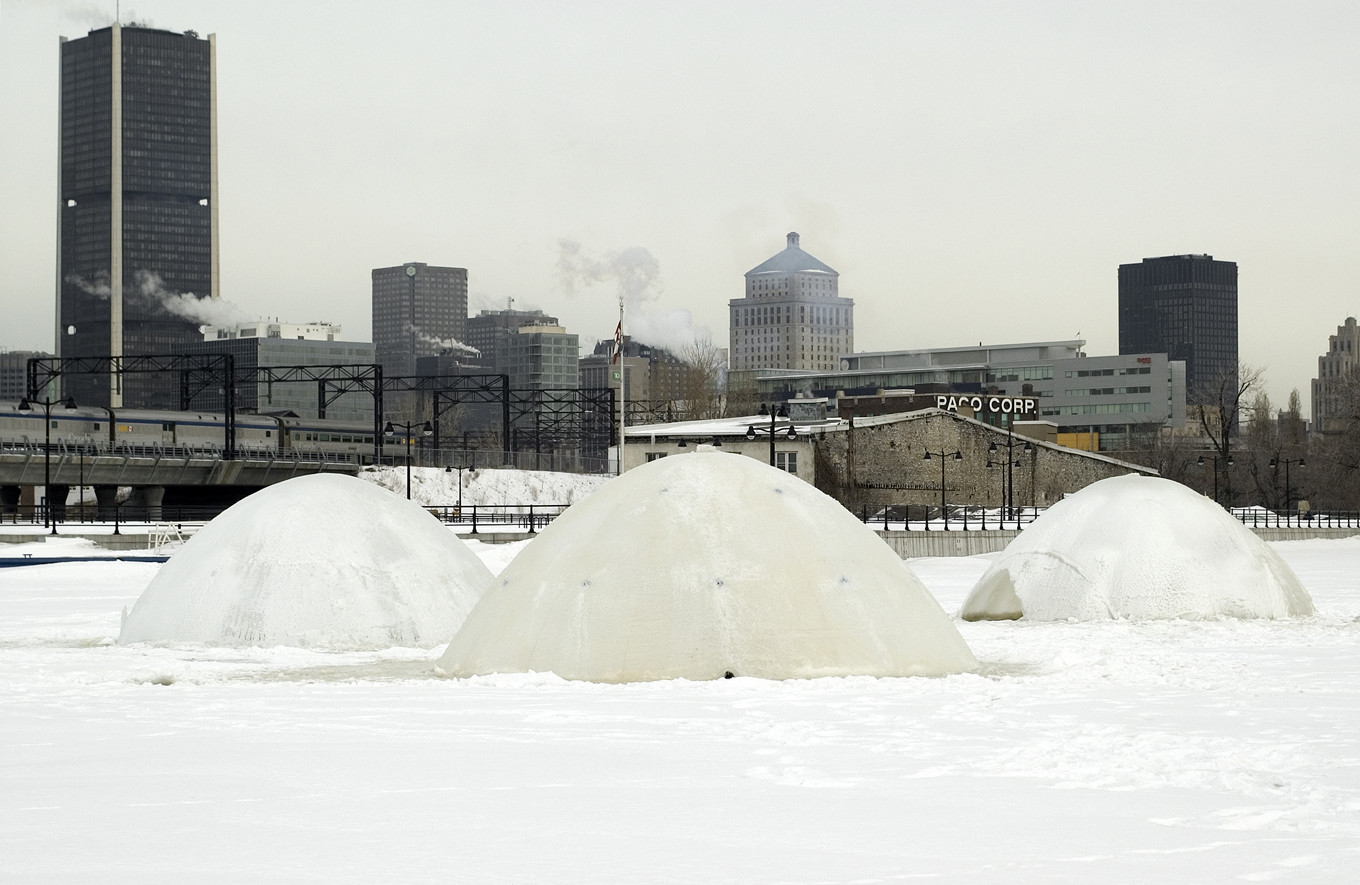
From the 26th of February onwards, many artistic and experimental Domes will be raised at the heart of the Peel basin on the Lachine Canal. Recreating a rural universe in downtown Montreal, Ana Rewakowicz and Steve Topping invite the public to discover their ephemeral ice shelters and to tour the interior in order to appreciate the effects of the light and the quality of space in these precarious dwellings.
The matrix used in the fabrication of these domes is made from an inflatable vinyl structure whose frame is composed of plastic pipes pierced all around. Once this is arranged on a frozen flat surface of water and equipped with a rechargeable battery, it is connected to a blower that inflates it with air and to a "heating" pump that collects the water under the ice and circulates it into the pipes. A fog disperses and covers the surface which, upon contact with the air (-10 to -20 degrees Celsius), is transformed into a fine film of ice in about twelve hours. Once the transparent shell stabilizes, the matrix is then deflated and reused for a new dome. Each dome has a six meters diameter and a height of roughly two meters, and the ice layer that contains their dwelling should reach a thickness of four centimeters at its base and six centimeters at its peak.
Born of collaboration between two artists, this collective is interested in experimental constructions adapted to daily life and uses its know-how for the conception and production of Ice Domes. While Ana Rewakowicz has experimented for several years on inflatable elements responding to imaginary needs, Steve Topping has been creating shelters and alternative spaces that he approaches as temporary and transportable residences.
The ice domes are part of a contemporary artistic current preoccupied with the precariousness of the living conditions of a certain population, namely homeless people. But they also correspond with the utopia of creating nomadic and autarkical dwellings in the form of a "survival kit" adapted to our harsh climate.
This multitude of domes, connected by hallways, forms an imaginary village that could very well be one of the invisible cities* of Marco Polo. Its name would be Doma**, characteristically melting and disappearing in the sun on beautiful days, forever yielding to the cycle of the seasons. To find this city, all you have to do is follow Peel Street to the canal. And if you look closely, you can find it under the highway at the feet of the grain silos of Five Roses Flour (Farine Five Roses). Architectural phantasm or urban paradox, the Ice Domes invite the general public to stroll through a fairy daydream amidst the contrasting industrial atmosphere of the site.
*In les Villes Invisibles d'Italo Calvino
**"Doma" in Russian means "house"
Thanks to Parks Canada, Ville de Montreal and Jean-Philippe Saia, Eng.
Steve Topping Ana Rewakowicz
Ana Rewakowicz was born in Varsovia, Poland in 1966. She lives and works in Montreal (Québec).
Steve Topping lives and works in Montreal and in St John's, Newfoundland, Canada.
